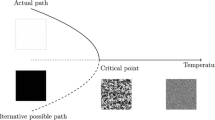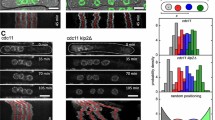Abstract
Division of labour is a marked feature of multicellular organisms. Margulis proposed that the ancestors of metazoans had only one microtubule organizing center (MTOC), so they could not move and divide simultaneously. Selection for simultaneous movement and cell division had driven the division of labour between cells. However, no evidence or explanation for this assumption was provided. Why could the unicellular ancetors not have multiple MTOCs? The gain and loss of three possible strategies are discussed. It was found that the advantage of one or two MTOC per cell is environment-dependent. Unicellular organisms with only one MTOC per cell are favored only in resource-limited environments without strong predatory pressure. If division of labour occurring in a bicellular organism just makes simultaneous movement and cell division possible, the possibility of its fixation by natural selection is very low because a somatic cell performing the function of an MTOC is obviously wasting resources. Evolutionary biologists should search for other selective forces for division of labour in cells.
Similar content being viewed by others
REFERENCES
Barford, J. P. and R. J. Hall (1976). Estimation of the length of cell cycle phases from asynchronous cultures of Saccharomyces cerevisiae. Experimental Cell Research 102: 276-284.
Bell, G. (1989). Darwin and Biology. Journal of Heredity 80: 417-421.
Buss, L. W. (1987). The Evolution of Individuality. Princeton University Press, Princeton.
Clowes, F. A. L. (1965). The duration of the G1 phase of the mitotic cycle and its relation to radiosensitivity. New Phytologists 64: 355-359.
Cornell, R. B. and A. F. Horwitz (1980). Apparent coordination of the biosynthesis of lipids in cultured cells: Its relationship to the regulation of the membrane sterol:phospholipid ratio and cell cycling. Journal of Cell Biology 86: 810-819.
Darnell, J., H. Lodish and D. Baltimore (1990). Molecular Cell Biology (Second edition). Scientific American Books, New York.
Gerhart, J. and M. Kirschner (1997). Cells, Embryos, and Evolution: towards a cellular and developmental understanding of phenotypic variation and evolutionary adaptability. Blackwell Science, Oxford.
Guiguet, M., J.-J. Kupiec and A.-J. Valleron (1984). A systematic study of the variability of cell cycle phase durations in experimental mammalian systems. In: L.N. Edmunds Jr. (ed.), Cell Cycle Clock, pp. 97-111. Marcel Dekker, Inc., New York.
Jablonka, E. and M. J. Lamb (1995). Epigenetic Inheritance and Evolution: The Lamarckian Dimension. Oxford University Press, Oxford.
Kerszberg, M. and L. Wolpert (1998). The origin of metazoa and the egg: a role for cell death. Journal of Theoretical Biology 193: 535-537.
Kirk, D. L. (1998). Volvox: Molecular-Genetic Origin of Multicellularity and Cell Differentiation. Cambridge University Press, Cambridge.
Koufopanou, V. (1994). The evolution of soma in the Volvocales. The American Naturalist 143: 907-931.
Margulis, L. (1981). Symbiosis and Cell Evolution. Freeman, San Francisco.
Maynard Smith, J. and E. Szathmáry (1995). The Major Transitions in Evolution. W. H. Freeman, Oxford.
Nesse, R. M. and G. C. Williams (1994). Why We Get Sick: The New Science of Darwinian Medicine. Times Books, New York.
Niu, D. K. and J.-K. Chen (1997). Evolutionary advantages of cell specialization: Save and protect DNA. Journal of Theoretical Biology 187: 39-43.
Nygaard, O. F.; S. Guttes and H. P. Rusch (1960). Nucleic acid metabolic in a slime old with synchronous mitosis. Biochimica et Biophysica Acta 38: 298-306.
Pardee, A. B.; R. Dubrow, J. L. Hamlin and R. F. Kletzien (1978). Animal cell cycle. Annual Review of Biochemistry 47: 715-750.
Robbins, E.; and M. D. Scharff (1967). The absence of a detectable G1 phase in a cultured strain of Chinese hamster lung cell. Journal of Cell Biology. 34: 684-686.
Schuster, P. (1996). How does complexity arise in evolution: Nature's recipe for mastering scarcity, abundance, and unpredictability? Complexity 2: 22-30.
Szathmáry E. and Maynard Smith, J. (1995). The major evolutionary transitions. Nature 374: 227-232.
Author information
Authors and Affiliations
Rights and permissions
About this article
Cite this article
Niu, D.K., Chen, JK. & Liu, YD. Margulis' Theory on Division of Labour in Cells Revisited. Acta Biotheor 49, 23–28 (2001). https://doi.org/10.1023/A:1010277405954
Issue Date:
DOI: https://doi.org/10.1023/A:1010277405954




